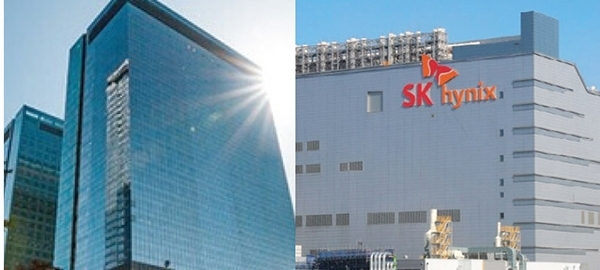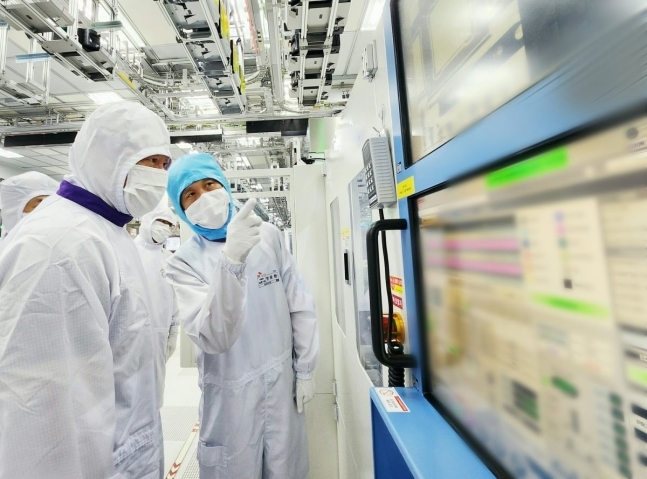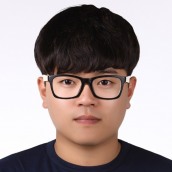 이미지 확대보기
이미지 확대보기According to Samsung Electronics and SK Hynix on 13th August, the two companies will start mass production of HBM4, the next-generation HBM product, next year. HBM is categorized into generations based on the level of stacking technology (stacking) of memory. Up to now, up to the fifth generation has been commercialized.
2nd place (42% share) Samsung is currently undergoing HBM3E performance testing from Nvidia and is expected to begin mass production later this year.
Samsung Electronics, which has lost its pride in SK Hynix, which it considered to be one step below it in the memory market, plans to turn the tables in the competition for HBM4 leadership. As Nvidia, which has a 98 percent monopoly in the global AI semiconductor market, releases new AI GPU 'Rubin' in 2026, it plans to quickly secure supply. Nvidia plans to install HBM4 in Rubin for the first time.
In particular, industry observers believe that Samsung will have an advantage because HBM4 requires a finer process and specific components and designs than previous products. Up to the HBM3E, the HBM was arranged horizontally around the GPU but, HBM4 is characterized by its increased computational speed by vertically stacking HBMs on top of GPUs. In this case, the 'logic die', an essential part that connects the GPU and HBM, requires foundry (semiconductor contract manufacturing) capabilities.
Samsung Electronics is the only all-in-one company in the global semiconductor market with its own memory, foundry, and packaging capabilities. This means that Samsung Electronics has strengths in cost reduction, productivity, and customized strategies compared to SK Hynix, which outsources production to Taiwanese foundry company TSMC.
"We are developing HBM4 with the goal of launching it in the second half of next year," said Kim Jae-joon, head of strategic marketing(Vice President) at Samsung Electronics' memory division, in a conference call on the 31st of last month. "We are discussing detailed specifications with our customers, such as developing customized products to meet customer-specific HBM demand, and will respond in a timely manner based on our supply capabilities."
 이미지 확대보기
이미지 확대보기On the other hand, SK Hynix plans to strengthen its technology super gap strategy, such as expanding investment and early commercialization, based on its market share.
SK Hynix is known to have placed an order for equipment to expand the M16 plant in Icheon, which is under construction as a state-of-the-art DRAM plant. The plant produces general-purpose DRAMs used in various AI and electronic devices, including next-generation HBMs.
Prior to this, SK Group announced its plan to invest about 103 trillion won in strengthening HBM competitiveness with SK Hynix over the next five years by securing an additional 80 trillion won by 2026 along with the AI-centered rebalancing declaration in June.
SK Group Chairman Choi Tae-won also met with Nvidia CEO Jensen Huang in April and TSMC Chairman Wei Zhejia in June to solidify the three-way alliance. He also encouraged members by visiting the Icheon Campus, SK Hynix's headquarters, on the 5th of this month.
Chairman Choi Tae-won said, "SK Hynix is now recognized in the HBM market, but we should not settle for the present as competition will become fiercer when 6th generation HBM is commercialized next year. We should focus on securing technological competitiveness without shaking and think fiercely about next-generation products." "Let's commercialize 6th generation HBM early next year to protect Korea's AI semiconductor leadership and contribute to the national economy."
Kim JaeHun (rlqm93@fntimes.com)
가장 핫한 경제 소식! 한국금융신문의 ‘추천뉴스’를 받아보세요~
데일리 금융경제뉴스 Copyright ⓒ 한국금융신문 & FNTIMES.com
저작권법에 의거 상업적 목적의 무단 전재, 복사, 배포 금지








![‘AI 승부수’ 던졌는데…‘펨토셀(초소형 기지국)’ 걸려 넘어진 KT [Z-스코어 : 기업가치 바로 보기]](https://cfnimage.commutil.kr/phpwas/restmb_setimgmake.php?pp=006&w=284&h=214&m=5&simg=2025120722444001671dd55077bc221924192119.jpg&nmt=18)










